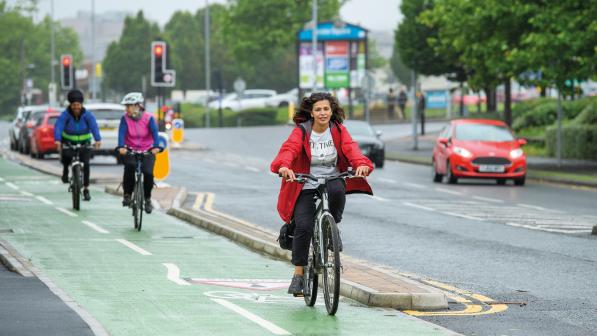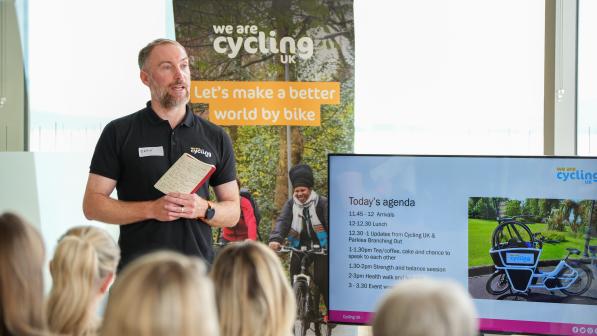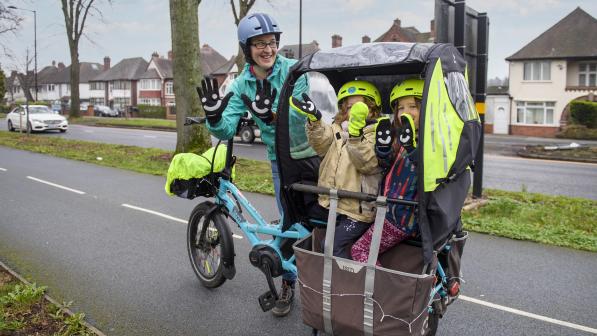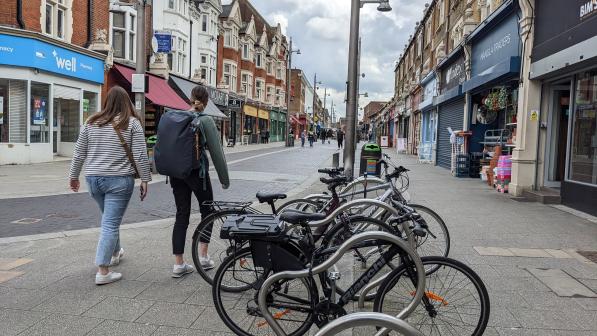Programme for Government 2025-26

The Programme for Government in Scotland sets the tone, and the targets, for the year ahead. Announced today, this Programme for Government has been brought forward by four months in order to allay fears of a slowing economy and answer the need for growth.
Good news
We’ve seen climate change U-turns across the globe recently, so it’s a relief to see the Scottish Government recognising that climate remains a key priority. This Programme for Government promises a ‘Healthier, Cleaner, Happier and Fairer Scotland’, with the stated aim to put people first.
First Minister John Swinney has also got one eye on what can be achieved before the election in May 2026, which makes this the perfect time to re-assert the value of active travel:
- Active and sustainable transport save individual taxpayers, and NHS Scotland, money.
- Active travel stimulates the local economy and keeps people in work longer.
- Active travel provides excellent, long-term, value for money, and return on investment.
- Active travel is good for workplaces, employees who use active travel take fewer sick days and are more productive.
- Active travel is good for businesses as consumers spend more on the high street when they walk or cycle there.
Is there something missing?
Transport has been a tricky nut to crack for this government, as evidenced by the ambitious targets which have sadly fallen by the wayside this year:
- Government promised to reach £320m, or 10% of transport funding on active travel.
- Government promised to reduce the number of car kilometres on Scotland’s roads by 20% by 2030, and to create a Route Map to achieving this.
- Government promised to invest £500m in bus priority infrastructure through the Bus Partnership Fund.
These transport targets have been dropped since the last Programme for Government.
Slow progress, but progress
Despite the missed targets, there has been some progress over the course of last year, commendable when budgets are strained across the board.
While it has fallen short on its ambitious target of £320m (or 10% of the total transport budget) being spent on active travel, there have been increases to funding over the term of this parliament, to both infrastructure and behaviour change projects, resulting in real change.
And while there have been fewer infrastructure developments than we may have liked, there are a tranche of ‘shovel-ready’ projects waiting in the wings (such as Glasgow’s Avenues project). We hope these can be as successful as Glasgow’s South City Way and the City Centre West to East Link in Edinburgh, which have been instantly successful.
Government has also led active travel stakeholders (Transport Scotland, Regional Transport Partnerships, Local Authorities and active travel delivery partners) through the Active Travel Transformation Project. Not the most glamorous of headlines but maintaining its commitment to the Verity House agreement; ‘local by default, national by agreement.’
Missed opportunity
Transport featured fairly highly in this Programme for Government with peak fares being scrapped from September, and a new Electric Vehicle (EV) fund being announced. Unfortunately, active travel is only mentioned once.
Clearly there is still a huge opportunity for active travel to take the strain in Scotland:
- Almost a third of climate-damaging emissions come from transport, and the biggest contributor within that sector is from private car use.
- 50% of short journeys (between 1-2km) taken in Scotland are taken by car.
- 66% of all car journeys are made alone.
How this government achieves the aims of car reduction is still critical, something the Cabinet Secretary acknowledged while accepting that the 20% reduction target had to be dropped, earlier last month. Details on what will follow from the 20% target, and how to turn targets into delivery are the crucial next steps.
The removal of peak rail fares from September will see fewer cars on the roads and give people greater choice in how they travel which is fantastic progress for the environment and for encouraging more people to walk and cycle. However, the Scottish Government has also been tempted to pursue electric vehicles as a solution to solve the problems that cars have caused.
- Cars, with electric motors, or with internal combustion engines, lock-in inequalities (for example, EVs are more expensive and more likely to be available to higher earning households).
- Swapping petrol and diesel cars for electric cars will not improve road safety in Scotland, which is worsening.
- Pursuing the status quo with cars, electric or internal combustion, does nothing about the fact that 35% of Scots do little or no physical activity each week, with huge health and wellbeing consequences.
In the face of cost-of-living, climate and health emergencies it would be wrong to repeat the same mistakes with cars (albeit different cars) and miss another opportunity with active travel.
Like last year, active travel is one of the clearest ways to tackle the government’s four priorities. Like last year, active travel is the missing element in this Programme for Government.



